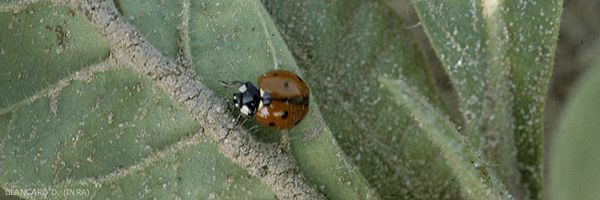
Beneficial insects
Many natural auxiliary insects (beneficial insects) visit tobacco crops and help to reduce pest populations. Some of them have real specificities, others are much more polyphagous. In France, an exhaustive inventory is in progress to know them better and help to develop their potential parasitism or predation. As we have stated previously, the list of auxiliary species present in tobacco crops is not precisely known. Yet it is quite easy when inspecting a plot to ascertain the presence of the most common and most visible of them. These include for example several species of ladybirds (figure 1), midges (figure 2), hymenoptera parasitoids (figure 3), hoverflies (figure 4), lacewings ... Some of these insects are able to deal with other pests such as whiteflies, thrips, leafhoppers ... The effectiveness of these auxiliaries is still poorly understood. For example, in figure 5 one can observe a defoliating caterpillar parasitised by Apanteles congregatus. The parasitised caterpillar was invaded by several larvae which, at some point spun their white oval cocoons, clearly visible outside it. In the U.S. it is not uncommon to find over 90% of caterpillars parasitised in late season.





